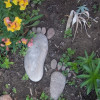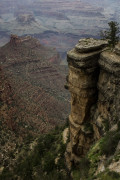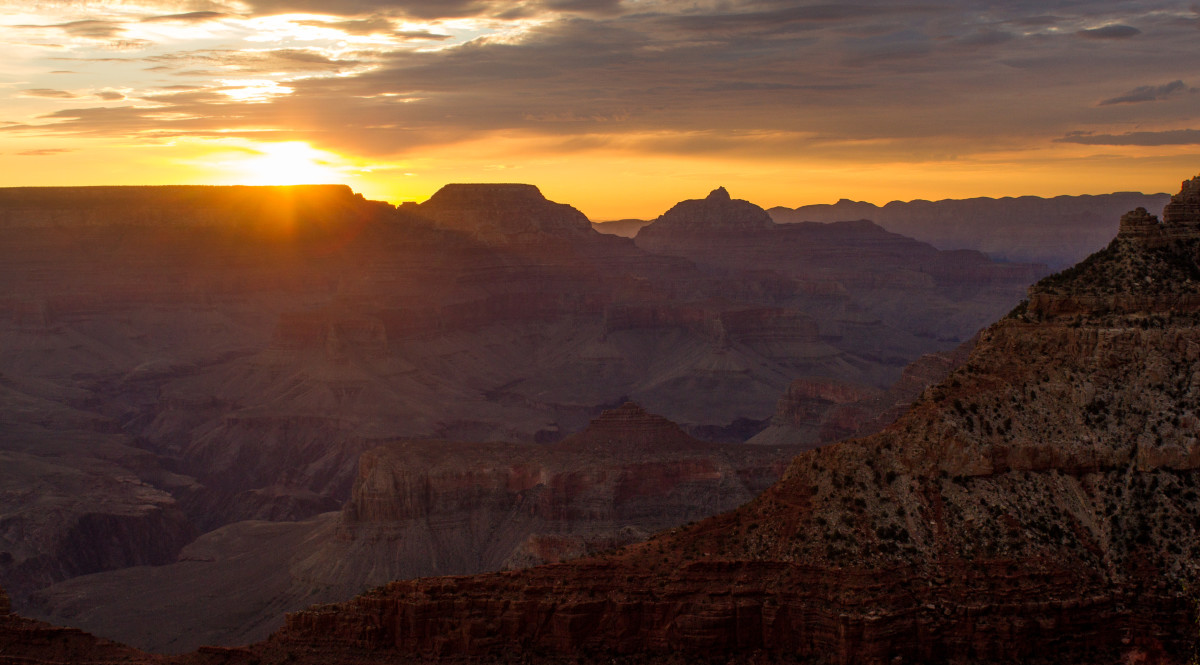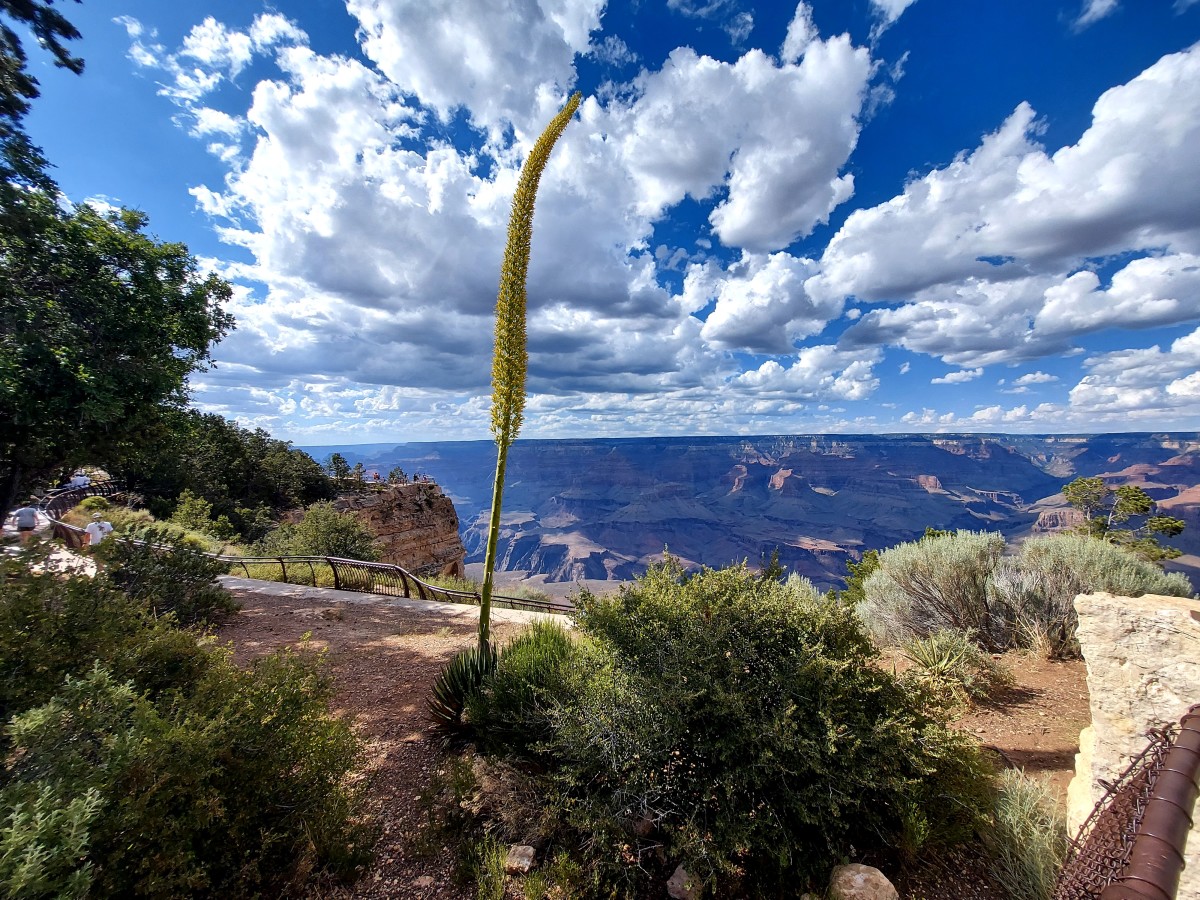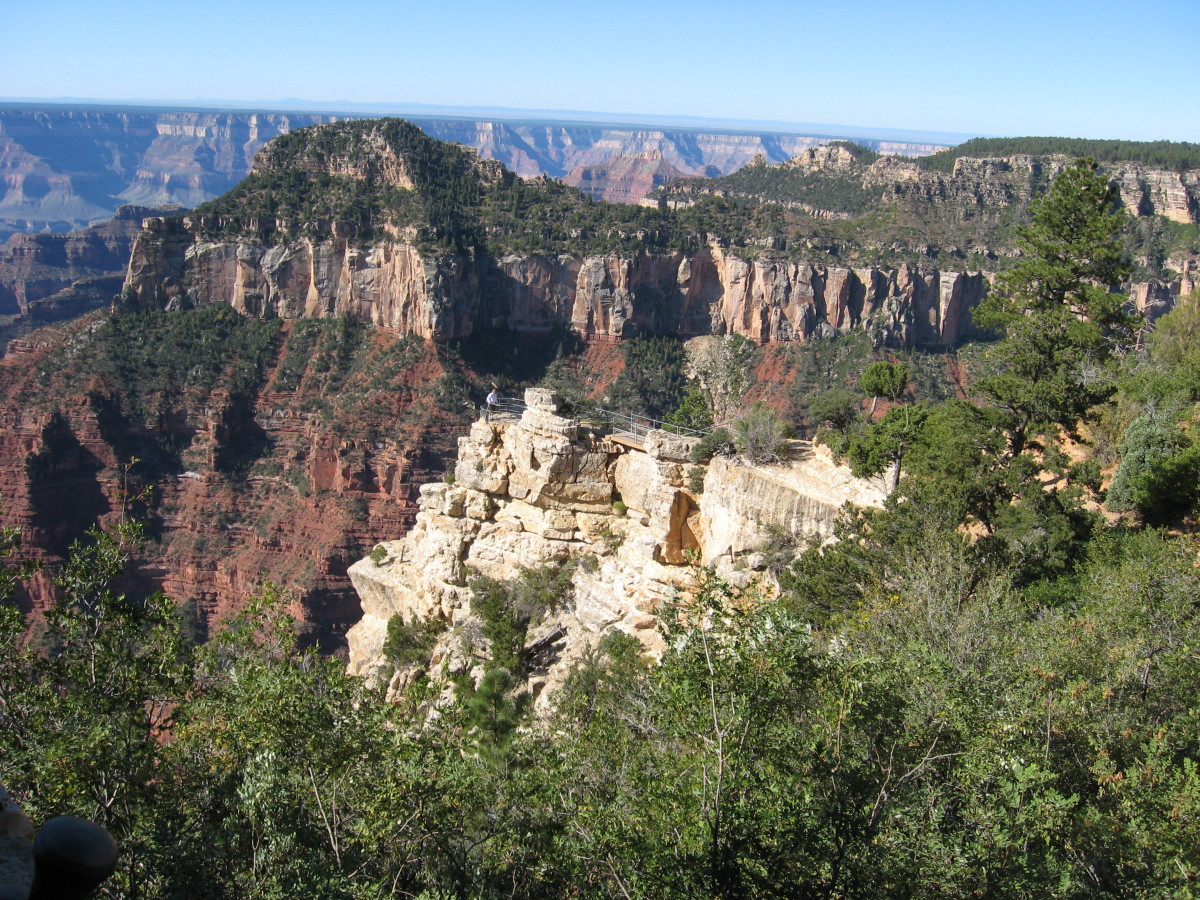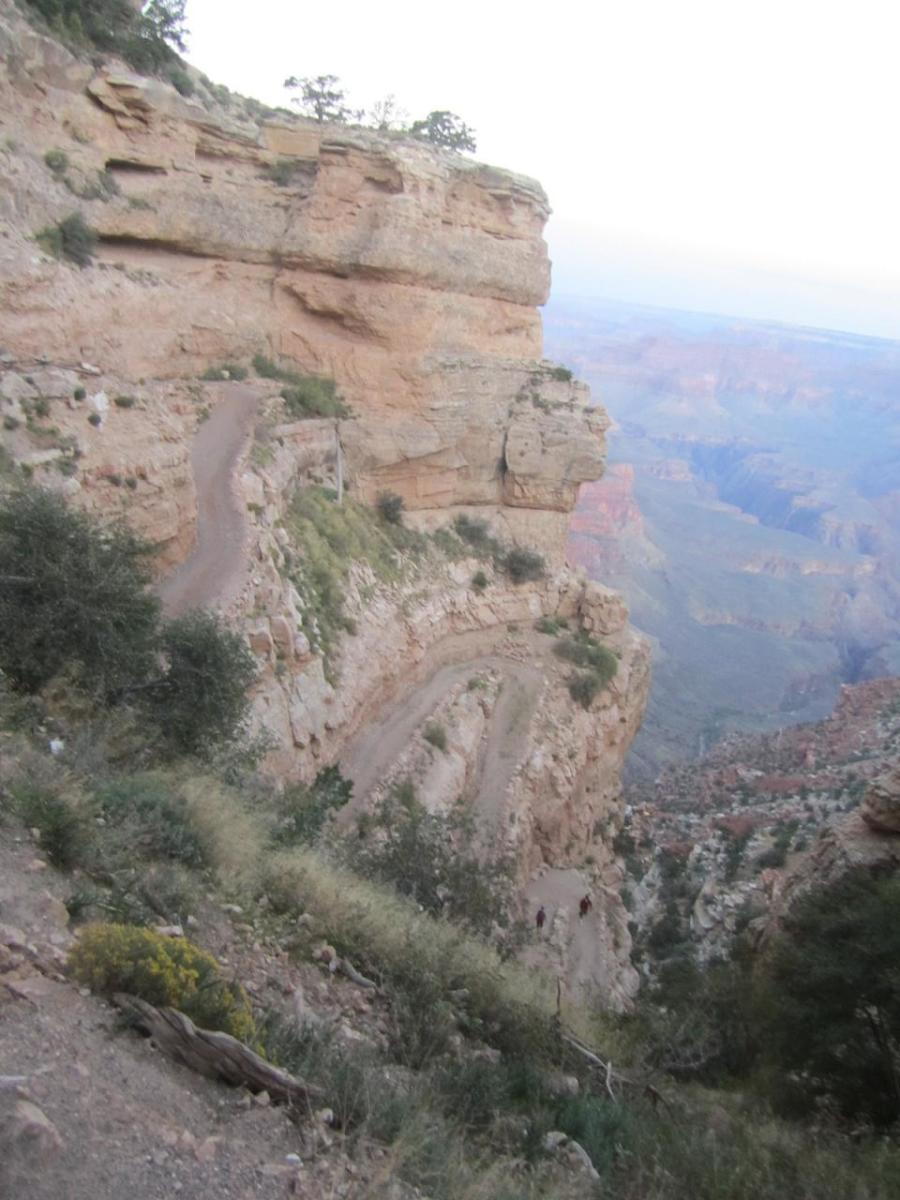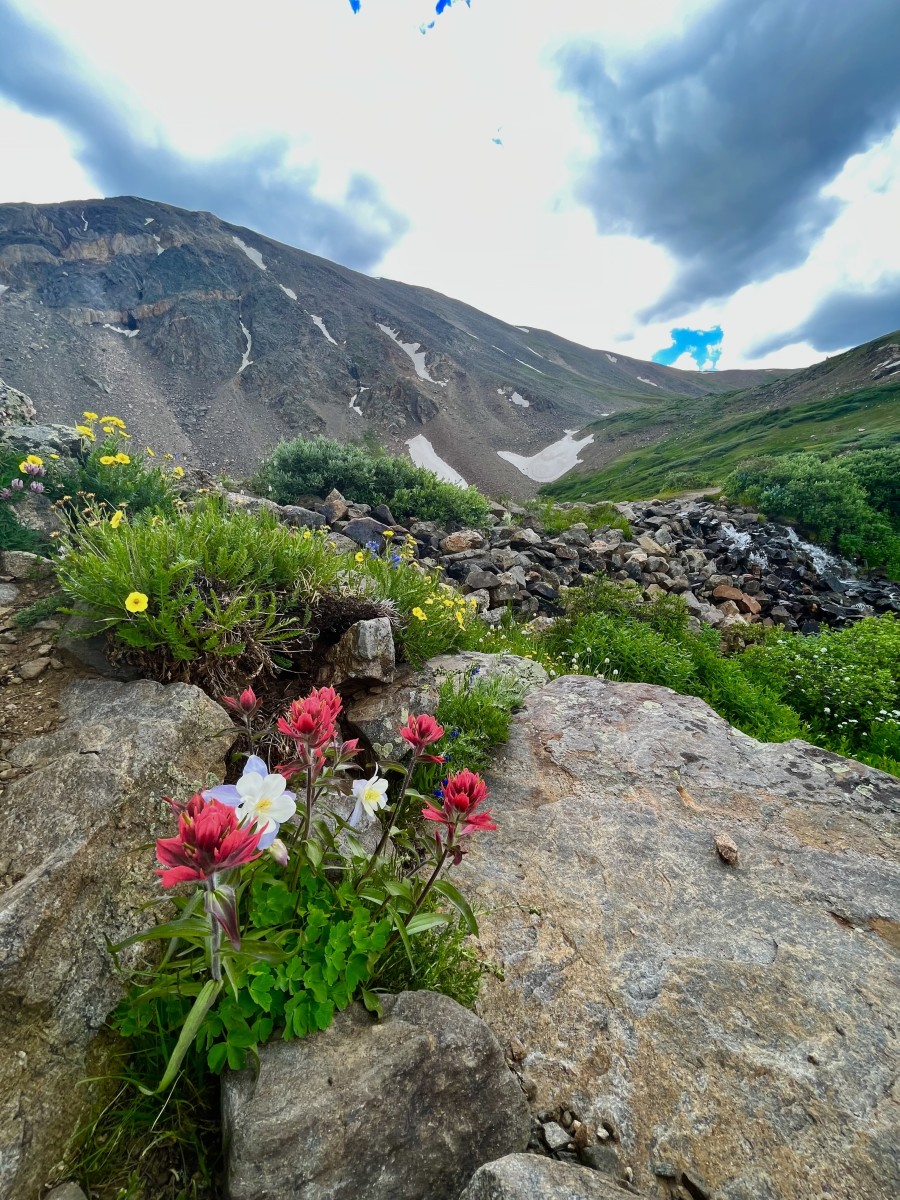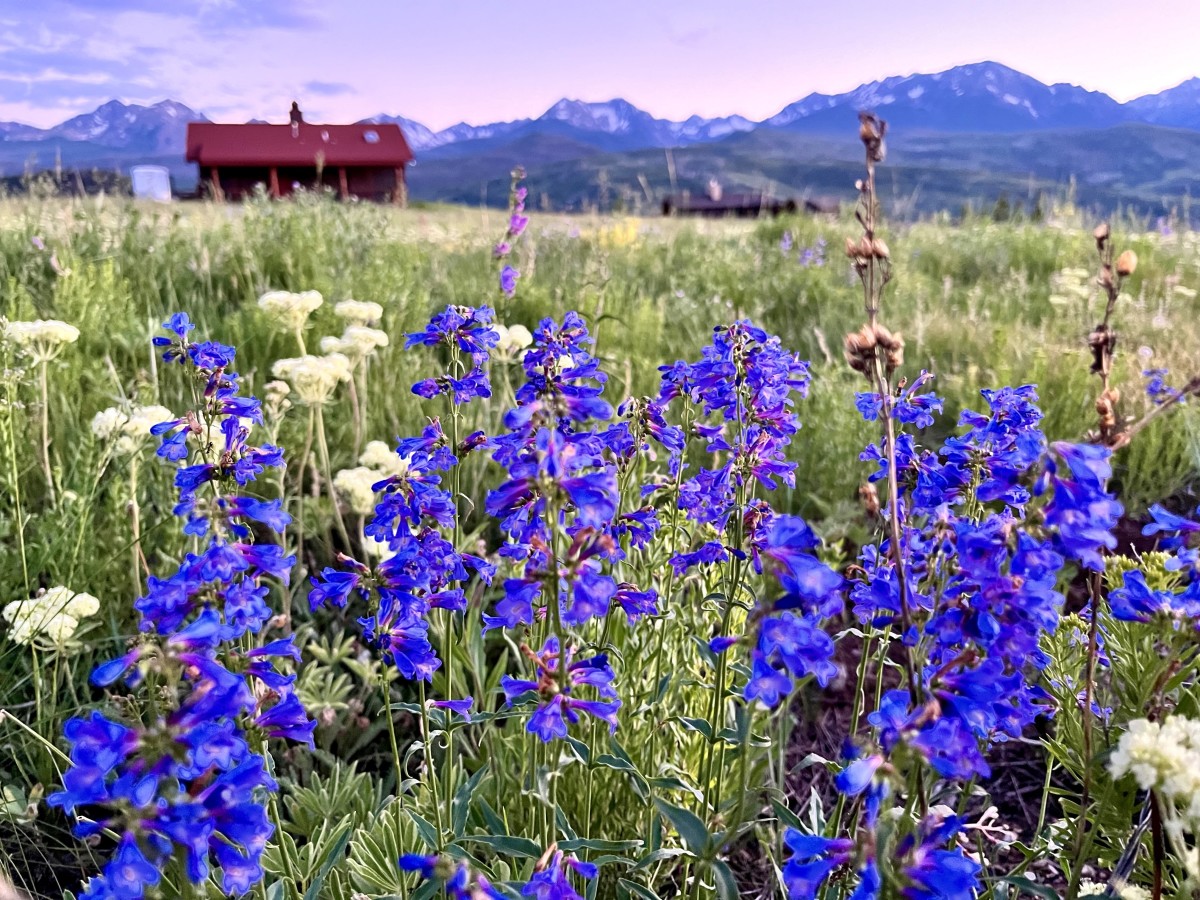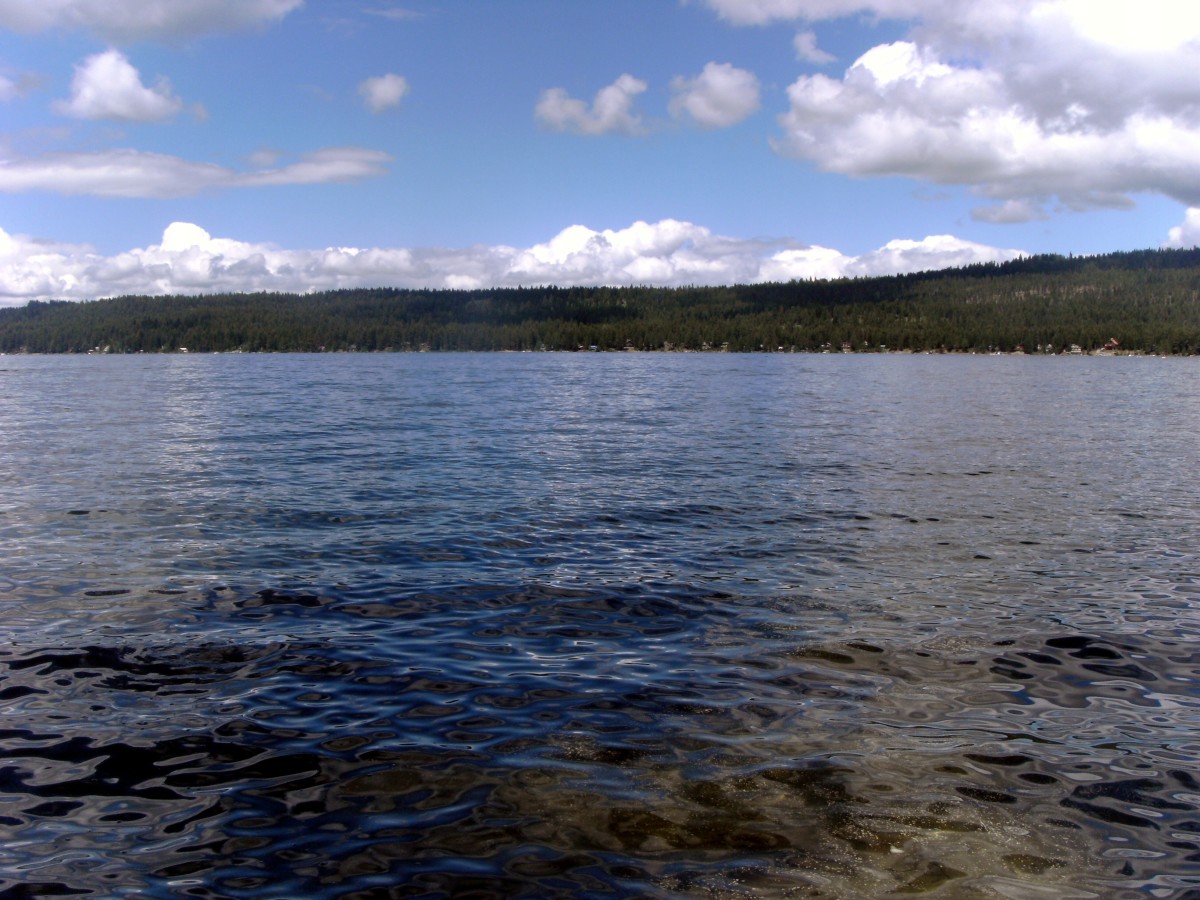The Grand Canyon - The Museum

The Tusayan Museum at the ruins in Grand Canyon National Park
A must see stop along the way when visiting the south rim of the Grand Canyon is the Tusayan Museum.
It was an eye opener, the awe in looking at relics from a civilization that lived in North America 4000 years ago. I have always thought of our country as a very young country, but these people lived on our continent a long, long time ago.
The earliest known people lived here during the Paleoindian period, began at approximately 11,500 ago and lasted approximately 3,000 years to the end of the last ice age.
During this time they believe small, roaming groups or bands of people hunted mountain goats, ground sloth, and bison; and gathered wild plants. Paleoindian sites are extremely rare in the Southwest; only one known site has been found within the Grand Canyon National Park.
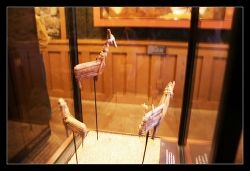
Split Twig figurines that are up to 4000 years old
This is a quote from the National Park Service website about these incredibly well preserved Split Twig figurines that are up to 4000 years old. I thought they looked like little horses.
"Humans have inhabited the Grand Canyon region for at least 4,000 years.
The oldest evidence of their presence is tiny split-twig figurines, animal figures a few inches in height, made primarily from twigs of willow or cottonwood and found in caves below the rim. These early remains were fashioned by the people of the Desert Culture.
Split-Twig Figurines
Some of the oldest and most facinating artifacts found here in the Grand Canyon are split-twig figurines.
Each one is made from a single twig, often willow, split down the middle, and then carefully folded into animal shapes.
These figurines date from 2,000 to 4,000 years ago and were found in remote caves.
Often they are in the shape of deer or bighorn sheep, sometimes with horns or antlers. Occasionally, they are pierced with another stick, resembling a spear, or are stuffed with artiodactyl dung. Split-twig figurines have been found in dry caves in the Great Basin and on the Colorado Plateau, and were first recognized in the Grand Canyon in 1933.
--While their exact function remains a mystery, recent research suggests that split-twig ----figurines were totems associated with the Late Archaic hunting and gathering culture. Their occurrence in remote, relatively inaccessible uninhabited caves indicates that these figurines were not toys. They are usually found under rock cairns, indicating careful placement."
It makes one wonder what preserves something made from a twig, was it because they were found inside caves away from the weather and temperature changes of the outside world?
Reference used: Archeological Resources
Pottery and Basket at the Tusayan Museum at the Grand Canyon
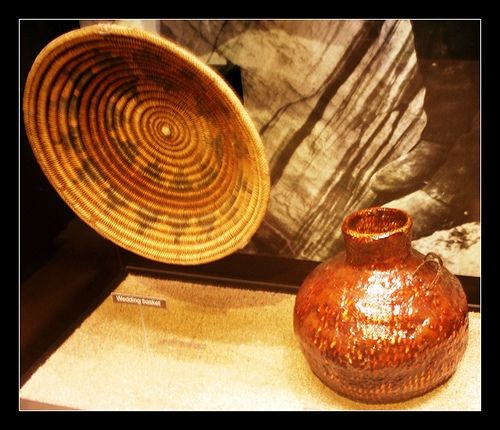
Pottery and Basket at the Tusayan Museum at the Grand Canyon
I have always thought of our Country being inhabited for such a short time. It was a true eye opener to see that the Native Americans have been here for thousands of years. Proof in the age of the items found in the Grand Canyon.
Pottery at the Tusayan Museum at the Grand Canyon
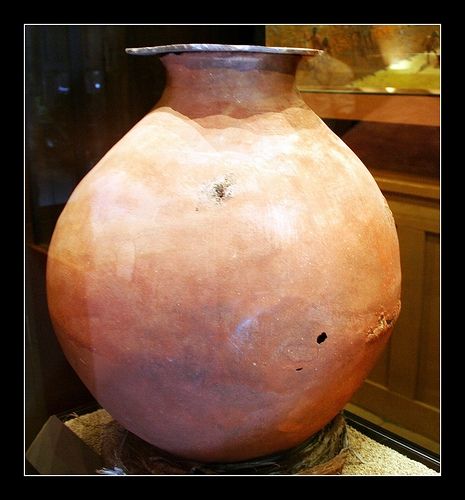
Pottery at the Tusayan Museum at the Grand Canyon
Primitive Pottery amazes me. Created entirely by hand, how amazing these pottery makers were. No kiln, no spinning wheel to help make them precise. How did they make them so well?
Pottery at the Tusayan Museum at the Grand Canyon
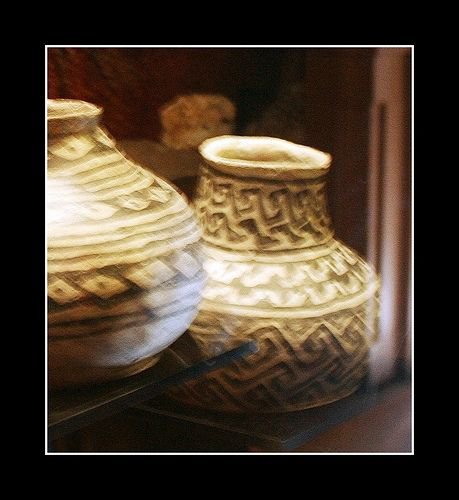
Pottery at the Tusayan Museum at the Grand Canyon
How to get to the Tusayan Museum
Display at the Tusayan Museum at the Grand Canyon
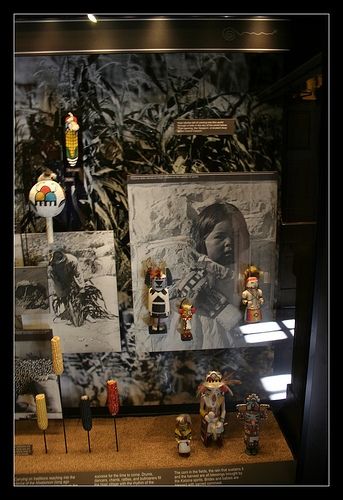
This display is about the Hopi beliefs on life, creation and how they taught their children.
The Hopi believed that they came into this world through a hole in the sky of the world below. That hole lies deep within the depths of the Grand Canyon. It makes one wonder, did they believe that this world is heaven?
The dolls shown are to teach their children about the different spirits.
Corn was very important to them, a staple that supplied nourishment it was also ground into cornmeal, used not only in cooking but in ceremonies.
They believed that the corn in the field, the rain that sustains it and the harvest are all blessing of the Katsina spirits. Children as well as brides were blessed with cornmeal in ceremonies.
Pottery at the Tusayan Museum at the Grand Canyon
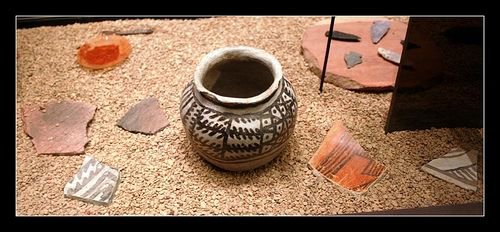
Pottery at the Tusayan Museum at the Grand Canyon
Sandal at the Tusayan Museum at the Grand Canyon
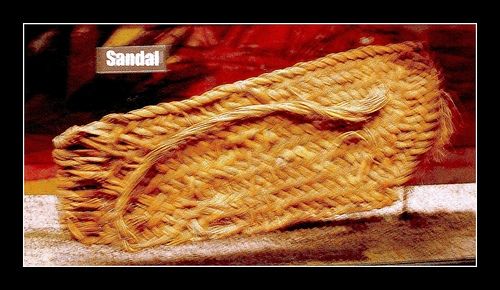
This picture, though a little blurred, shows the intricate weaving that the indians put into their sandals. Shaped very much like the modern day "thong sandal". I found this very interesting, how this shoe design has survived the test of time!
Would you visit this museum
Would you visit this museum?
Hopi Indian dolls - Grand Canyon
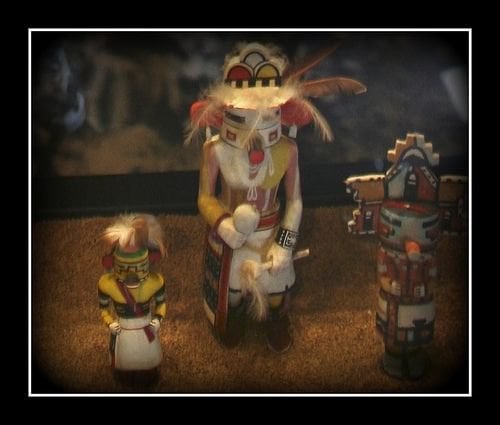
Hopi spirit dolls at the Tusayan Museum
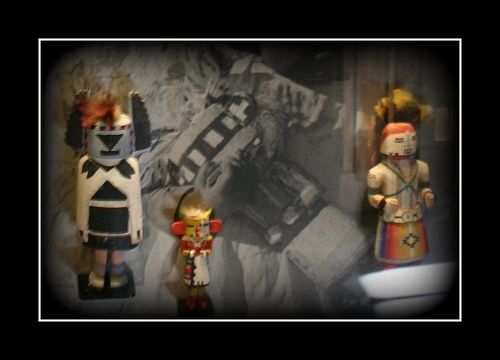
These dolls were used to teach the Hopi Children about the spirits.
Hopi Rattle and Bullroarer at the Tusayan Museum
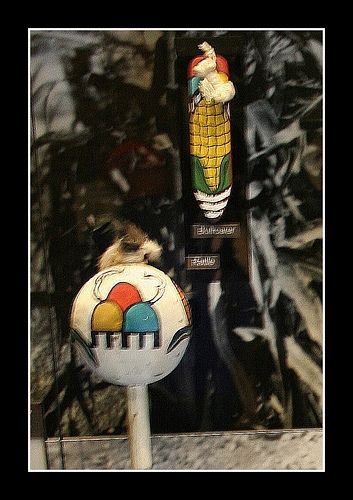
The bottom left is a rattle used by the Hopi Indians and the upper right is a "Bullroarer" on display at the Tusayan Museum in the Grand Canyon National Park.
Thank you for taking the time to stop by, I really appreciate you! Please drop a note below so that I know you were here.
Thank you,
Linda
